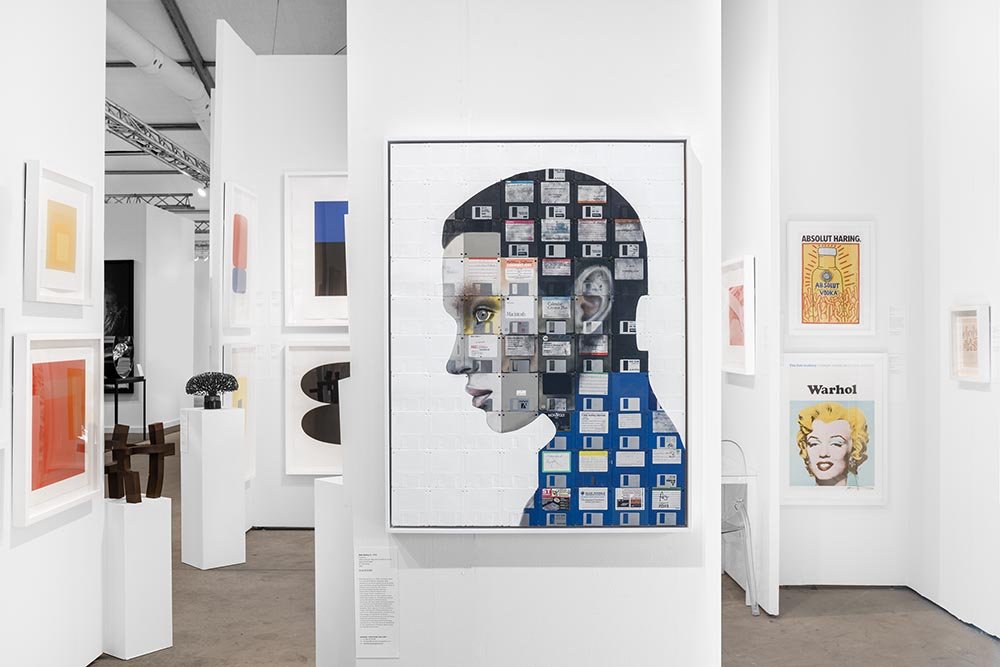Collective Memory
Solo show
Robert Fontaine Gallery, Miami
2012
The Robert Fontaine Gallery, in its mission to provide viewers with an engaging, vibrant contemporary program throughout the year, is pleased to announce the first solo exhibition in the US of British artist Nick Gentry.
Nick Gentry, who was born around the same time that the floppy disk became ubiquitous for personal use, the 3.5-inch pieces of plastic are symbolic of the harsh world of obsolescence
The Central Saint Martins graduate paints sombre, Generation X portraits on canvases made from floppy disks, whose metal hub serves as the subject’s startlingly dilated eye.
Adding to his haunting renderings are the handwritten labels on the disks and the way the disks’ original blue, black, or grey colour contributes to the composite form.
Emerging artist inspired by AI
Floppy disks are in that inevitable process of obsolescence and are already considered to be an artefact of the recent past. These objects are no longer relied upon, but by momentarily placing them in the spotlight, it becomes easier to comprehend the speed and extent of the technological changes that are taking place today.
Whilst being so prevalent, each disk also has the possibility to be completely unique, containing everything from games to important documents, pictures and more. The handwritten labels on each disk provide a clue as to what might lie beneath in a preserved and dormant state. These digital fossils represent the passing age of physical media.
It’s possible to draw a comparison with human mortality and the obsolescence of technological products. Society seems to revere beauty of youth, and often people seek to somehow hang on to it. In the same way, each new technological gadget is desired more than the last.
There can be little room for sentiment or nostalgia though, as change should be embraced and celebrated. There is everything to love about the constant flux of existence. Remembering and reflection is also useful to help us connect some of the dots of progress.
The subject of the paintings are often confused. This comes from the traditional way of looking a portrait, where the face of the person is considered to be the ‘subject’ or true identity and the canvas is simply used as the platform to show this.
Gentry’s portraits are effectively a reversal of traditional portraiture, where the patchwork of memories beneath becomes the identity and the painting is simply a way to give that mechanical subject a human face.













